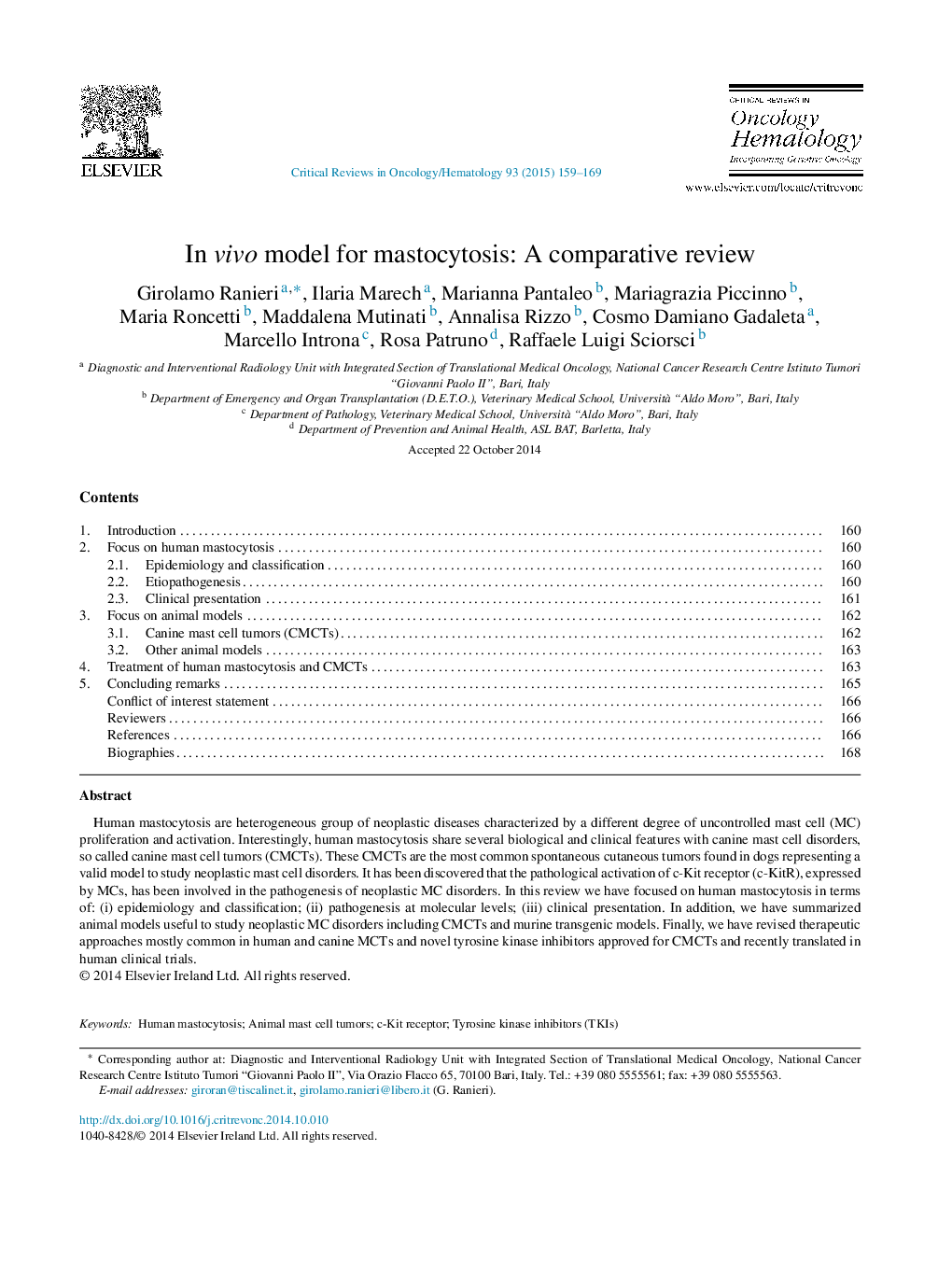| Article ID | Journal | Published Year | Pages | File Type |
|---|---|---|---|---|
| 3328684 | Critical Reviews in Oncology/Hematology | 2015 | 11 Pages |
•In vivo models of mast cell tumors (CMCTs) could represent a valid model to study human mastocytosis.•We have focused on human mastocytosis in terms of: (i) epidemiology and classification; (ii) pathogenesis at molecular levels; (iii) clinical presentation.•We have summarized animal models useful to study neoplastic MC disorders.•We have revised therapeutic approaches mostly common in human and canine MCTs and novel tyrosine kinase inhibitors approved for CMCTs and translated in human clinical trials.
Human mastocytosis are heterogeneous group of neoplastic diseases characterized by a different degree of uncontrolled mast cell (MC) proliferation and activation. Interestingly, human mastocytosis share several biological and clinical features with canine mast cell disorders, so called canine mast cell tumors (CMCTs). These CMCTs are the most common spontaneous cutaneous tumors found in dogs representing a valid model to study neoplastic mast cell disorders. It has been discovered that the pathological activation of c-Kit receptor (c-KitR), expressed by MCs, has been involved in the pathogenesis of neoplastic MC disorders. In this review we have focused on human mastocytosis in terms of: (i) epidemiology and classification; (ii) pathogenesis at molecular levels; (iii) clinical presentation. In addition, we have summarized animal models useful to study neoplastic MC disorders including CMCTs and murine transgenic models. Finally, we have revised therapeutic approaches mostly common in human and canine MCTs and novel tyrosine kinase inhibitors approved for CMCTs and recently translated in human clinical trials.
